Wesley Girls’ Integrated Science Question Bank (Objectives)

Wesley Girls' integrated science
Wesley Girls’ Integrated Science Question Bank (Objectives)
Wesley Girls’ integrated Science: The questions provided are standard questions that can prepare candidates to achieve the best results.
1. A chemical container in a laboratory has the following hazard sign pasted on it
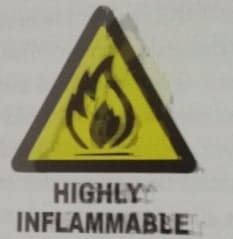
What must you be careful not to take near the container when it is open
A. Water B. combustible material C. lit match D. magnet
2. Which of the following animals does not have a backbone
A. Toad B. snail C. toitoise D. snake
3. Which of the following statements about chlorine is not true
A. The chlorine ion has the symbol Cl+
B. Chlorine is a gas at room temperature
C. Two atoms are bonded together in a molecule
D. Chlorine is a non-metal
4. Which of the following two elements combine to form an ionic compound
A. C and O
B. Al and Mg
C. H and S
D. Cu and O
5. The systematic name for the polyatomic ion PO43-is
A. Trioxophosphate (IV) ion
B. Tetraoxophosphate (IV) ion
C. Tetraoxophosphorus (V) ion
D. Tetraoxophosphate (V) ion
Wesley Girls’ Integrated Science Question Bank (Objectives)
6. Naphthalene (mothball) sublimes at room temperature. It is likely that it exhibits
A. Metallic bonding
B. Ionic bonding
C. Covalent bonding
D. No bonding
7. The molar mass of tetraoxosulphate (VI) acid, H2SO4is 98 gmol-1. The mass of the acid that will contain 0.62 mol of substance is
A. 8 g B. 60.8 g C. 158 g D. 5.8 g
8. A partially permeable membrane can best be described as on through which
A. No substance can pass
B. Any substance can pass
C. Only certain substances can pass
D. Only water can pass
9. The following are all processes of chemical weathering of rocks except
A. Nitrification B. carbonation C. oxidation D. reduction
10. Which of the following rocks is/are easily weathered
A. Sedimentary rock
B. metamorphic rock
C. igneous and metamorphic rocks
C. Sedimentary and igneous rocks
Others also read: Prempeh Integrated Science Question Bank (Objectives)
Wesley Girls’ Question Bank (Objectives)
11. Nature has provided for the purification of the atmosphere. Which of the following is/are concerned with the purification of the atmosphere
A. Filtration of harmful ultraviolet radiation
B. Reflection of radiant energy
III. Rotation of the earth
A. I, II and III B. I only C. I and II only D. II and III only
12. Which group of bacteria oxidise NH4+ ions into nitrite (NO2+) ions
A. Rhizobium
B. Azotobacter
C. Nitrosomonas
D. Nitrobacter
13. The oxidation of nitrite into nitrate is termed
A. Denitrification B. nitrification C. mineralization D. ammonification
14. The skeleton consist of
A. Bones, cartilage and fluid
B. Bones, ligaments and membrane
C. Bones, cartilage and ligaments
C. Bones and ligaments
15. All of the following parts are found in the hind-limbs except the
A. Femur B. tibia C. fibula D. radius
Wesley Girls’ Integrated Science Question Bank (Objectives)
16. A group of petals is known as
A. Androecium B. Calyx C. Corolla D. Gynaecium
17. Which of the following fruits is an example of false fruit
A. Cashew B. Mango C. Orange D. Pawpaw
18. A balanced diet contain
A. All the energy-giving foods
B. All the food substances
C. All the food substances in their correct proportions
D. All the food substances in their correct proportions and quantities
19. Bile emulsifies fats. This means that the bile
A. Destroys fat
B. Converts fats to fatty acids and glycerol
C. Breaks down large fat globules into small fat droplets
D. Prevents enzymes from digesting fats
20. Which of the following is the substrate in respiration
A. Carbon dioxide B. glucose C. oxygen D. water
Integrated Science Question Bank (Objectives)
21. Which of the following statements best explains osmosis
A. Solvent molecules move from a weak solution into a strong solution
B. Solvent molecules move from a weak solution into a strong solution across a partially permeable membrane
C. Solute particles move from a strong solution into a weak solution
D. Solute particles move from a weak solution into a strong solution across a partially permeable membrane
22. The energy used by living things to carry out life activities ultimately comes from
A. Green plants B. animals C. food D. the sun
23. The food chain: “grass – sheep – man” includes
A. Producer, secondary consumer and tertiary consumer
B. Primary consumer, secondary consumer and tertiary consumer
C. Primary consumer, secondary consumer and decomposer
D. Producer, primary consumer and secondary consumer
24. Temperature is an example of
A. A biotic factor B. an abiotic factor C. a secondary consumer D. a producer
25. The main sources of greenhouse gases are
A. Water vapour, methane and hydrogen
B. Aerosol propellants, burning of fossil fuels and methane
C. Ammonia gas, water vapour and carbon monoxide
D. Carbon monooxide, carbon dioxide and nitrous oxide
Wesley Girls’ Integrated Science Question Bank (Objectives)
26. Vaccination and the use of antibiotics are effective as of controlling diseases caused by
A. Fungi B. viruses C. nematodes D. bacteria
27. Which of the following diseases is nutrition related
A. Heartwater disease B. rinderpest C. bloat D. piglet anaemia
28. Potassium hydroxide and sodium hydroxide are both
I. Bases II. Alkalis III. Slightly soluble in water IV. Able to neutralize acids
A. I and II B. I, II and IV C. I, II and III D. I, II, III and IV
29. Which of the following indicators can measure pH values most accurately
A. Litmus B. methyl orange C. phenolphthalein D. Universal indicator
30. One example of a micro-nutrient is
A. Phosphorus B. calcium C. manganese D. magnesium
Wesley Girls’ Integrated Science Question Bank (Objectives)
31. The boiling and freezing points of water can change with a change in
I. Density II. Atmospheric pressure III. Adhesion
A. I only B. II only C. I and II D. I, II and III
32. Treatment of water for public consumption can be done by
I. sedimentation II. Filtration III. Adding chlorine IV. Distillation
A. I and II B. III and IV C. I, II a nd III D. I, II, III and IV
33. Which of the following sources of water is not directly linked to the sea
A. Rivers B. streams C. lagoons D. ponds
34. Which of the following processes does not contribute directly to the water cycle
A. Evaporation of sea and soil water
B. Deforestaton
C. Running water into the sea
D. Rainfall
35. The loose fold of skin that hangs from the throat of Zebu cattle is called
A. Dewlap B. hump C. udder D. withers
Wesley Girls’ Integrated Science Question Bank (Objectives)
36. Which of the following structures transports urine from the kidney to the urinary bladder
A. Pelvis B. urethra C. ureter D. pyramid
37. The testes of male mammals hang outside the body because
A. The temperature inside the body is too low for maximum sperm production
B. The temperature inside the body is too high to maximum sperm production
C. To scrotal sac lives outside the body
D. The testes must hang outside to support the penis
38. One advantage of male circumcision is to
A. Declare the individual holy
B. Confer manhood on the individual
C. Prevent infection of the tip on the penis
D. Enable the penis to become erect
39. Which of the following is not a blood disorder
A. Sickle cell anaemia
B. Hole in the heart
C. Haemophilia
D. Leukaemia
40. Which of the following are emitted from a radioactive substance without altering the mass number or the atomic number of the substance
A. Protons B. electrons and neutrons C. protons and neutrons D. neutrons
Integrated Science Questions
41. Which one of these forces cannot act at a distance and must have physical contact between two or more bodies
A. Frictional force B. gravitational force C. magnetic force D. electrostatic force
42. The best way to put out a fire from a gas source is to
A. Cover it with a blanket
B. Pour water on it
C. Close the tap to the gas supply
D. Switch off the electric light
43. The following statements about corrosive substances are true except
A. Corrosive substances can destroy the skin
B. Concentrated tetraoxosulphate (VI) acid is corrosive
C. Corrosive substances dissolve glass
D. Containers of corrosive substances should be labelled with the appropriate hazard symbol
44. In the production of salt in a medium-scale industrial process, which of the following scientific processes are involved
A. Cooling and heating
B. Solar evaporation and crystallization
C. Flash processing and evaporation
D. Saponification and crystallization
45. Yeast is used in the manufacture of
A. Insulin B. beer C. cheese D. yoghurt
Wesley Girls’ Integrated Science Question Bank (Objectives)
46. Duralumin is an alloy used in the construction of aircraft because it
A. Has a low melting point
B. Is attractive in appearance
C. Is very light and strong
D. Is resistant to corrosion
47. The following can have negative effects on the environment if they occur during crude oil exploitation
I. Oil spillage
II. Hydrocarbon gas flaring
III. Leakage or damage of oil pipes
IV. Nonpayment of royalties
A. I B. I and II C. I, II and III D. I, II and IV
48. The following measures can be carried out to stop or minimize the effects of an oil spill
I. Oil companies must stringently observe regulations in place
II. Spraying oil dispersants chemicals on the water body
III. Construct emergency stations to treat the animals affected
IV. Pump out some of the water from the affected water body
A. I and II B. II and III C. I, II and IV D. I, II and III
49. Galvanizing iron to prevent rusting involves covering it with a thin layer of
A. Plastic B. grease C. tin D. aluminium
50. Carbon is referred to as tetravalent because it can
I. Form only four single bonds in all its bond formations
II. Form a total of four bonds including single, double or triple bonds
III. Have four electrons in its outer shell
IV. Exist as charcoal
A. I only B. II and III C. II only D. II, III and IV
Wesley Girls’ Questions
51. The following are all causes of non-pathogenic diseases except
A. Stress B. malnutrition C. toxins D. viruses
52. The root nodules of legumes contain
A. Nitrogen-fixing bacteria
B. Fungi
C. Oil
D. Nematodes
53. ‘filling-in’ is practised when crops are planted
A. In the nursery
B. At stake
C. Using vegetative methods
D. On slope
54. Which part of the mammalian brain controls breathing and rate of heartbeat
A. Cerebrum B. medulla oblongata C. cerebellum D. optic lobe
55. Shadow formation shows that light rays
A. Can be diffused
B. Travel in straight lines
C. Can be refracted
D. Can be reflected
Wesley Girls’ Integrated Science Question Bank (Objectives)
56. Which of the following statements is correct about the laws of refraction of light
A. The incident ray, the refracted ray and the normal at the point of incidence all lie in the same plane
B. The angle of incidence is equal to the angle of refraction
C. The angle of incidence is always greater than the angle of refraction
D. Sine I is always equal to sine r
57. Which of the following statements about the absolute scale of temperature is correct
A. The temperature scale starts at 273 K
B. The zero point is 273 degrees below 0oC
C. The temperature at which ice melts is -273 k
D. The temperature at which water boils is 100 k
58. Heat is transferred along an iron rod by
A. Conduction B. radiation C. convection D. reflection
59. Which of the following is not true concerning heritable variation
A. It is determined by genetic make-up
B. It is passed on from parent to offspring
C. It has many intermediate forms
D. It can sometimes be called discontinuous variation
60. Acquired characteristics are
A. Inherited from parents
B. Caused by the environment
C. Examples of genetic variation
D. Passed on to offspring
Answers To Wesley Girl’s Integrated Science Question Bank (Objective)
- C
- B
- A
- D
- D
- C
- B
- A
- A
- B
- B
- C
- B
- C
- D
- C
- A
- D
- C
- B
- B
- D
- D
- B
- B
- D
- D
- D
- D
- C
- C
- D
- D
- B
- D
- C
- B
- C
- C
- B
- A
- C
- C
- B
- B
- C
- C
- D
- D
- B
- D
- A
- B
- B
- B
- A
- A
- A
- D
- B
Post Disclaimer
The information contained in this post is for general information purposes only. The information is provided by Educative News and while we endeavour to keep the information up to date and correct, we make no representations or warranties of any kind, express or implied, about the completeness, accuracy, reliability, suitability or availability with respect to the website or the information, products, services, or related graphics contained on the post for any purpose.

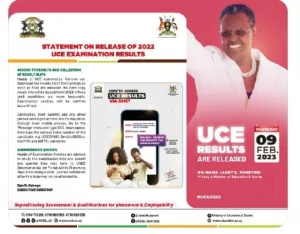


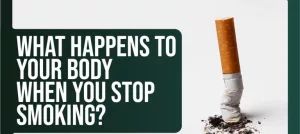


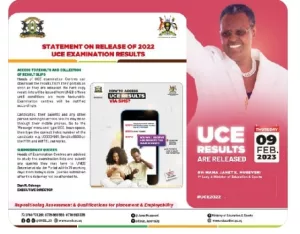
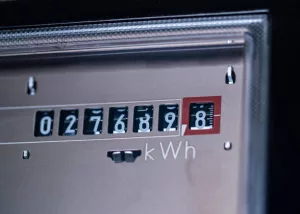
Question flew nicely